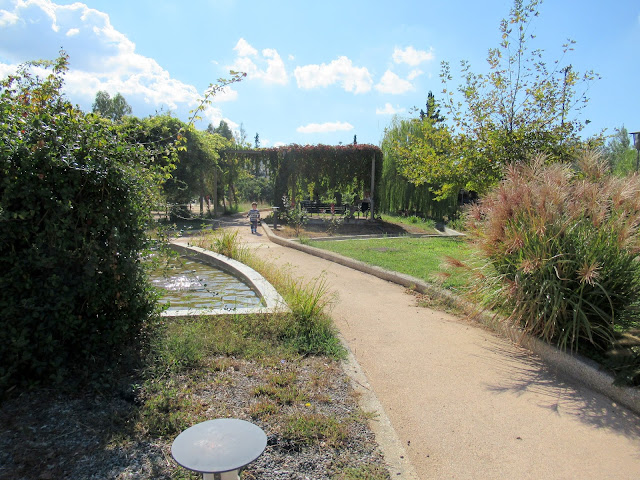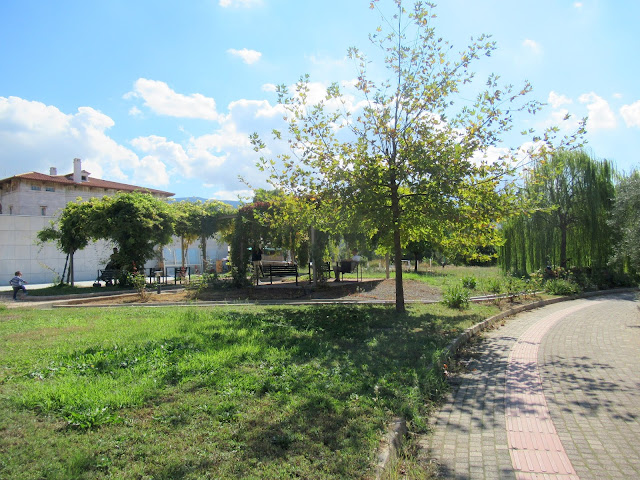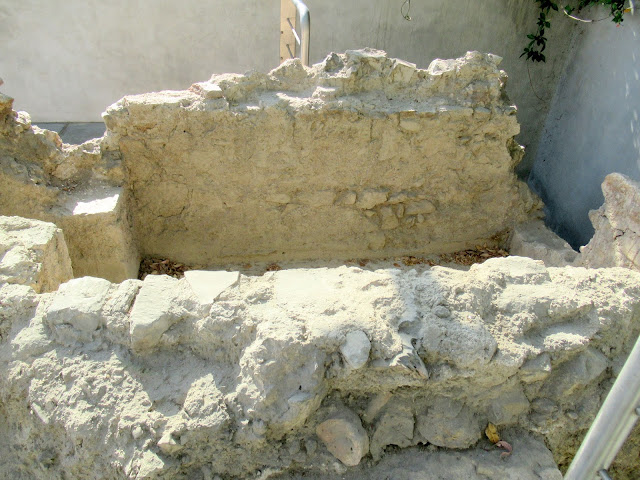The garden at the Byzantine Museum is a calm, cool oasis in the middle of noisy, busy, chaotic Athens city centre.
We entered through the main gate facing the main building
the museum complex consists of five buildings. This sculpture sits in front of one of those - my guess, it's the administration building
across from that is the building where the bulk of the permanent exhibition is housed. On the wall, some of the Lumina photographs (post to follow)
varied planting on the grounds, including mature trees
the smell of lavender is everywhere, at times overpowering
another building on our right
past the fountain
lots of shaded areas for people to sit away from the sun, which is still quite strong despite the fact that it's October
this weeping willow provides more shade
the water from the fountain is channelled throughout the garden
a good view of the main building and restaurant from here
many paths facilitate access to all areas of the garden
We had reached the back of the garden where it's mainly lawns, trees and bushes
Three copies of sculptures from the museum's collection:
The Foliate Cross, with leaves sprouting from its base, predominates in Byzantine art as a symbol of rebirth, victory over death and hope of eternal life in Paradise.
Peacocks, with their impressive feathers that grow in spring, are a symbol of beauty and rebirth. They are often depicted in churches as references to humankind's expectations for salvation and eternal life in heaven.
Sculpture by
Stella Sarigiannidou which unfortunately was impossible to photograph given that it's in a glass case and the sun was very strong
More copies of artefacts from the museum's collection
It's so peaceful here
We had arrived at the site where the ancient graves were re-located.
A cemetery, in use from the Archaic (7th-6th century BC) to early Byzantine period (3rd-6th century AC) was uncovered in Koukaki in 1996-1997, following the construction of the Athens metro. Three of the 64 tombs found, dating from the early Byzantine era and possibly belonging to Christians, were removed to the Byzantine Museum grounds.
Three rectangular vaulted tombs were probably family tombs. Their entrance was sealed off with a horizontal slab that opened for each subsequent burial. Three steps on the eastern side allowed descent to the tomb's interior. Clay vases, bronze buckles and a loom weight were found within the tombs, probably objects dear to the deceased during their lifetime.
Grave 1
Grave 2
Grave 3
We continued on our way, past this ancient olive tree
from here, beyond the museum, we could see Lycabettus Hill
zooming in
sculpture by
Konstantina Bolieraki
We had reached the steps that would take us to the back of the main museum building, where, on the terrace, a sculpture exhibition was being held. We spent a good hour looking at the sculptures (post to follow) and then
we moved over to the restaurant for lunch.
We sat at the front, as near the garden as possible

next to these flowering thyme bushes, which smelled divine.
We had a delicious lunch in the sunshine, and marveled at how wonderful it all was.

























































No comments:
Post a Comment